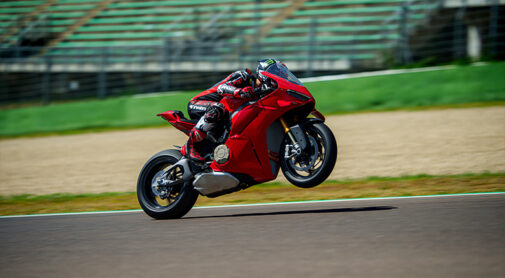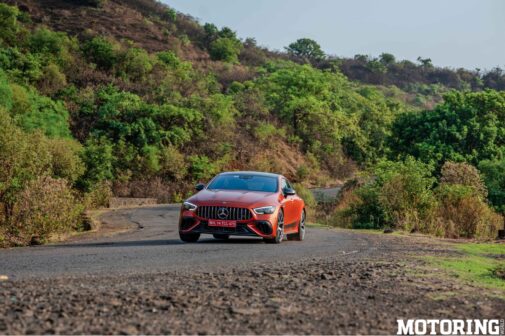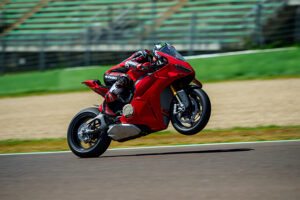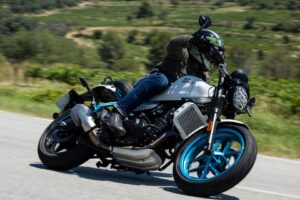The pale blue industrial roofing seemed like a manmade reflection of the sky above us, as I gripped a flagpole embedded in a crumbling pyramidal concrete base at a precarious height atop the office building next to the main gate. A little while ago, around 40 feet directly below us, the phrase ‘no gate pass’ had caused a high level of alarm in the security cabin, and I didn’t want to land in front of those gentlemen after sliding off the highest point in the factory. Certainly not without a gate pass. And between such dizzy thoughts brought on by the height, in floated the one that mattered the most: ‘This is where it all began.’
Tiruvottiyur facility in Chennai, the oldest motorcycle factory in India. As such, I consider it a place of great significance, and not just because a 1975 Bullet 350 happens to be my third parent. Called ‘TVT’ in RE colloquialism, the factory was built in 1955 and produced 163 Bullets in its first year. I came to TVT first and last in November 2014, when I rode my cantankerous Bullet from its home in Mumbai right onto TVT’s bright-green factory floor, and parked it in front of rows upon rows of UCE engines. This time around, the floor’s green was considerably dulled and the place was either empty or in the process of being emptied.
Having walked through the immense modernity, and the length and breadth, of the newer Vallam Vadagal plant the day before, I was grateful for TVT’s feet-friendly economy of space. For reference, TVT is contained in less than 10 acres; Oragadam is spread across 50 acres and Vallam Vadagal is around 60 acres. And there’s a fourth plant coming up in Cheyyar which is around 100 km from Chennai and is expected to be operational by 2025. But even light bends and falls a little differently on and in old places. TVT, even in the middle of the ongoing gutting, had that deep-dyed vibe of history. Heck, most of the place still smelled like an old cast-iron engine.
Meanwhile, work still went on at TVT at the rate of six days a week; no full motorcycles were being produced here anymore, but specific tasks were still being performed. The most important of them, I suppose, was making all those beautiful chrome tanks you see on various REs. TVT is the only place in the country which does chrome plating and painting, via those famous gold-dipped brushes; one tank takes about 15 hours in total to finish the process. Each tank gets four layers of nickel of a thickness of 25 microns, and the plating process takes two hours, with parts dipping in and out of 36 tanks filled with various hazardous liquids. Standing on a gangway lined next to the tanks, I lamented the fact that a process whose result was so gratifying is inherently extremely polluting.
Anyway, after the tank is plated, it is primed, coloured, lacquered, baked, and finally pinstriped. And I saw and felt the previous shortened sentence in real life, sometimes more intensely than I expected; while walking through the tanks that’d just come out of the oven that’d baked them at 140 °C for 22 minutes, my elbow touched one and I got a nice reminder about factory floor safety. Before that, though, we watched the tank being painted by hand; only 20 per cent of the paint stays on the tank, and each one gets four coats of colour and lacquer. And it was certainly great to see where the tank of our long-term chrome-red Classic had come from.

This is a feeling which I shall elaborate upon towards the end. As we walked into the pinstriping booth, the young chaps who’d been standing around and chatting started working at the sight of Mr Sreenivasam who was accompanying us. The average age of workers at TVT was way younger than the last time I was there. One of them started painting pinstripes on a Bullet tank faster than I could say, ‘What brush is that?’ I also learnt that the gold lines are a 1:2 ratio of paint and hardener, but I forgot which is which. Anyway, 200 of these tanks are made in TVT, while 70 are made in Vallam Vadagal. And since there are four pinstripers in TVT and eight in Vallam, you know who’s working harder.
At the peak of its production capacity in 2015, TVT made 18,000 motorcycles per month. Even with its current vacant look, I couldn’t fathom that many bikes crammed into it; I mean, it was tight enough in 2014. I walked around the place, up to the main meeting room, and imagined what sorts of decisions were taken there, just a few feet below that flagpole. I saw Siddarth Lal’s old office, a list of tasks still scribbled onto the whiteboard, and was certain that he’d gotten around to them sooner rather than later. Later, I found the test track on which I’d ridden my old Bullet with the factory test riders on bikes straight off the assembly line.
The track was a narrow one and it wasn’t used anymore; instead, it had become a sort of outdoor storage area. I saw the sea on one side of the factory and a metro line on the other and wondered where TVT would fit in the middle of the old and the new.
However, this is far from a downhearted ending. Just before we left, we stood at TVT’s gate and saw the Aditya-L1 satellite launch, and it disappeared into the sky before anyone realised what was happening. When TVT had already building Bullets for years, India didn’t even have a space programme. It was a sight that gave me hope. And this is why — among the various ideas mooted and rumoured about TVT’s future, my favourite one is that it will one day allow customers to stay and watch their bikes being built over two or three days, from beginning to the end, all in a setting that promises good hospitality. Alongside that, a part of TVT will become a Royal Enfield museum, among other things to keep visitors occupied. This fits right in with RE culture, and I promise to buy a bike just to live that whole experience. Throw in a bar or two, and we’d have a year-long RE festival right at TVT.
TVT really is like the old cast-iron engine, and like my own recently-restored Bullet, there is always hope for the one place that made motorcycles that never die. The other factories are welcome to be like the lovely J-series and 650 twins in their appeals, while the new one must likely reflect the EVs RE is planning. And I shudder at the thought. In any case, every Indian motorcyclist would do well to remember this — whichever motorcycle you ride today, you owe some part of that freedom to this place.
For a place that’s made motorcycles for 68 years in a 77-year-old country, imagine the number of riders it has created. If you’re reading this, you’re already connected to it. And whatever happens to TVT, I hope it’s something cool, something never done before — just like that day long ago when it first opened Indian eyes to the magic of motorcycles.


























